WHAT HOUSTON’S GOT IN COMMON WITH LA-LA LAND 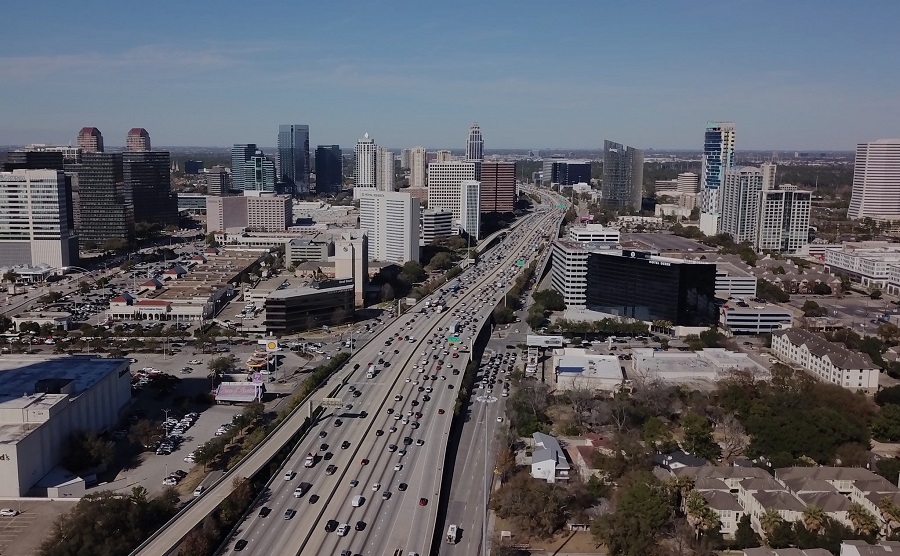 L.A Times architecture critic Christopher Hawthorne has this observation about Los Angeles: “This kind of city has grown so large — in economic and environmental as well as physical reach — that it begins to stretch beyond our field of vision.” Remind you of anywhere else? Hawthorne is responding in part to a New York Times article that blames the L.A. Times’s recent struggles on Los Angeles’s “absence of strong institutions to bind it together.” His response: we’re not the only ones like that — and it’s not entirely a bad thing, either. For a city like L.A. — and for example, he says, Houston — “The flip side of its great tolerance is a certain lack of cohesion, a difficulty in articulating a set of common civic goals.” Put another way, “The greatest thing and the worst thing about Houston are one and the same: Nobody cares what anybody else is doing.” [Los Angeles Times] Photo of West Loop: Russell Hancock via Swamplot Flickr Pool
L.A Times architecture critic Christopher Hawthorne has this observation about Los Angeles: “This kind of city has grown so large — in economic and environmental as well as physical reach — that it begins to stretch beyond our field of vision.” Remind you of anywhere else? Hawthorne is responding in part to a New York Times article that blames the L.A. Times’s recent struggles on Los Angeles’s “absence of strong institutions to bind it together.” His response: we’re not the only ones like that — and it’s not entirely a bad thing, either. For a city like L.A. — and for example, he says, Houston — “The flip side of its great tolerance is a certain lack of cohesion, a difficulty in articulating a set of common civic goals.” Put another way, “The greatest thing and the worst thing about Houston are one and the same: Nobody cares what anybody else is doing.” [Los Angeles Times] Photo of West Loop: Russell Hancock via Swamplot Flickr Pool
Tag: Sprawl
COMMENT OF THE DAY: UNINCORPORATED HARRIS COUNTY OUGHT TO START INCORPORATING  “Since the population is booming in unincorporated Harris County, it may approach a tipping point where the representation may need to be increased on the Commissioners Court. As it stands now, there are 4 Commissioners plus the County Judge, a total of 5 elected officials for this burgeoning population. Conceivably, we could have 8 Commissioners plus the judge so that each ‘slice’ of the county could be fewer people and theoretically, there would be more responsiveness from the county office to a given resident. That being said, I don’t mind more townships or small cities being created to mop up the unincorporated areas so that each burg could work to benefit its taxpayers. Basically, a divide and conquer approach (or ‘zone defense’ if you want another metaphor), but to provide responsive, efficient service to its own residents. There is only so much that the county can do when it has to cover the whole of Harris County.” [Wolf Brand Chili, commenting on The Astonishing Rise of Unincorporated Harris County] Illustration: Lulu
“Since the population is booming in unincorporated Harris County, it may approach a tipping point where the representation may need to be increased on the Commissioners Court. As it stands now, there are 4 Commissioners plus the County Judge, a total of 5 elected officials for this burgeoning population. Conceivably, we could have 8 Commissioners plus the judge so that each ‘slice’ of the county could be fewer people and theoretically, there would be more responsiveness from the county office to a given resident. That being said, I don’t mind more townships or small cities being created to mop up the unincorporated areas so that each burg could work to benefit its taxpayers. Basically, a divide and conquer approach (or ‘zone defense’ if you want another metaphor), but to provide responsive, efficient service to its own residents. There is only so much that the county can do when it has to cover the whole of Harris County.” [Wolf Brand Chili, commenting on The Astonishing Rise of Unincorporated Harris County] Illustration: Lulu
THE ASTONISHING RISE OF UNINCORPORATED HARRIS COUNTY 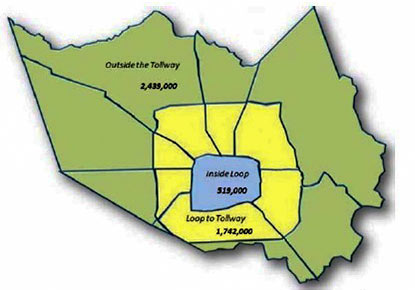 You already knew that more people in Harris County live outside Beltway 8 than inside it, right? And that of the people residing inside the Beltway, fewer than a quarter live inside the Loop? Here’s another nugget contained in the latest Harris County population report: the population of Harris County’s unincorporated areas will likely surpass that of Houston in 2020. That’s right: for 16 years, more than 80 percent of the growth in Harris County has taken place outside of the city limits of Houston and the 34 other cities that make up the county. Already, says the report, “‘Harris County Unincorporated’ would be the second largest city in Texas, the fifth largest in the U.S. and has a larger population than 14 U.S. states.” [Harris County Budget Management Department via Houston Chronicle] Map of populations inside and outside of ring roads: Harris County Population Report – January 2017
You already knew that more people in Harris County live outside Beltway 8 than inside it, right? And that of the people residing inside the Beltway, fewer than a quarter live inside the Loop? Here’s another nugget contained in the latest Harris County population report: the population of Harris County’s unincorporated areas will likely surpass that of Houston in 2020. That’s right: for 16 years, more than 80 percent of the growth in Harris County has taken place outside of the city limits of Houston and the 34 other cities that make up the county. Already, says the report, “‘Harris County Unincorporated’ would be the second largest city in Texas, the fifth largest in the U.S. and has a larger population than 14 U.S. states.” [Harris County Budget Management Department via Houston Chronicle] Map of populations inside and outside of ring roads: Harris County Population Report – January 2017
PEARLAND, CITY OF 3 WALMARTS 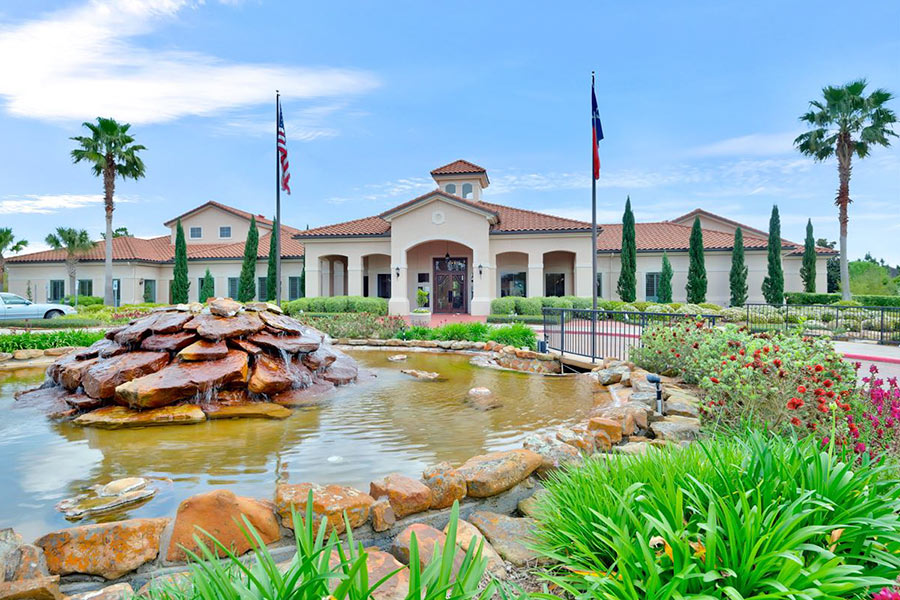 Ahead of this weekend’s local runoff election, the Christian Science Monitor delves into the rapid growth and demographic shifts in the “dumbbell-shaped suburb” of Pearland — and how a few candidates for municipal office are approaching it: “Its diversification is largely a result of [Houston’s] inexorable sprawl . . . where residents keep moving farther out in search of lower-density living.” Pearland now ranks as the nation’s eighth-fastest-growing city, but Houston’s only second-most-diverse suburb, where, writes Simon Montlake, as many as 75 languages are spoken in local schools, but residents refer to the eastern-most Walmart in town as the “white Wal-mart†— “because of who shops there – and who doesn’t.” At a forum held in the Bella Vita Club at the center of the age-restricted Bellavita at Green Tee community off Scarsdale Blvd. just east of the Golfcrest Country Club, a middle-aged woman wants to know how candidates plan to draw together what she sees as the “two cities” of Pearland. “Pearland is solidly middle-class,” Montlake notes. “A starter house costs $140,000, and median household income is $97,000, much higher than in Houston. But newcomers rushing to downtown jobs barely brush shoulders with the mostly white retirees who tee off on the golf course weekday mornings or the older families that work and play near home.” [Christian Science Monitor] Photo of Bella Vita Club: 55places.com
Ahead of this weekend’s local runoff election, the Christian Science Monitor delves into the rapid growth and demographic shifts in the “dumbbell-shaped suburb” of Pearland — and how a few candidates for municipal office are approaching it: “Its diversification is largely a result of [Houston’s] inexorable sprawl . . . where residents keep moving farther out in search of lower-density living.” Pearland now ranks as the nation’s eighth-fastest-growing city, but Houston’s only second-most-diverse suburb, where, writes Simon Montlake, as many as 75 languages are spoken in local schools, but residents refer to the eastern-most Walmart in town as the “white Wal-mart†— “because of who shops there – and who doesn’t.” At a forum held in the Bella Vita Club at the center of the age-restricted Bellavita at Green Tee community off Scarsdale Blvd. just east of the Golfcrest Country Club, a middle-aged woman wants to know how candidates plan to draw together what she sees as the “two cities” of Pearland. “Pearland is solidly middle-class,” Montlake notes. “A starter house costs $140,000, and median household income is $97,000, much higher than in Houston. But newcomers rushing to downtown jobs barely brush shoulders with the mostly white retirees who tee off on the golf course weekday mornings or the older families that work and play near home.” [Christian Science Monitor] Photo of Bella Vita Club: 55places.com

Have you seen this video (at top) from the city’s planning and development department? It’s silent, several years old, and not the flashiest portrait of Houston available on YouTube. But in a compelling series of images, it shows how mightily the city’s official boundaries have grown — simply by tracking Houston’s annexation history, decade by decade.
But now there’s a more active way to appreciate Houston’s historically bulging waistline — one that could even help increase your own in the process (depending on your choice of beverages). Each of the 5 laser-cut acrylic coasters in Data Design Co.‘s limited-edition set (shown in the photo above) is etched with an outline of this ever-expanding city at some point in its history. Designers Brian Barr and Matthew Wettergreen had the sets manufactured in Houston by Post-Studio, and are now offering them for sale for $60. Buy a set, and try one beverage on each over the course of an evening of thirst-quenching, and you’ll allow yourself to drink in a progressive view of this city’s expansive growth.
COMMENT OF THE DAY: CYCLING THROUGH TRAFFIC JAMS ON THE ROAD TO THE AMERICAN DREAM  “The real crux of the issue here is that Americans are constantly sold on the idea that cars represent ultimate freedom and prosperity. That image breaks down when crowds of commuters start forming giant, slow-moving, panic-inducing trains of automobiles. The cognitive dissonance causes automobilists to latch on to the only solution they can imagine: ‘wider roads will restore that feeling of freedom.’ Of course, it never really works out that way.” [Derek, commenting on Which Came First: the Traffic or the Freeway Lanes?] Illustration: Lulu
“The real crux of the issue here is that Americans are constantly sold on the idea that cars represent ultimate freedom and prosperity. That image breaks down when crowds of commuters start forming giant, slow-moving, panic-inducing trains of automobiles. The cognitive dissonance causes automobilists to latch on to the only solution they can imagine: ‘wider roads will restore that feeling of freedom.’ Of course, it never really works out that way.” [Derek, commenting on Which Came First: the Traffic or the Freeway Lanes?] Illustration: Lulu
ST. PAUL SUBURB REFUSES BUS CONNECTIVITY IN ORDER TO STAY “PRETTY RURAL-LOOKING” Meanwhile, in the Twin Cities: The Gold Line Busway, intended to connect downtown St. Paul with east-lying Washington County, will likely now terminate in the rapidly growing Woodbury area instead of rural Lake Elmo as planned, after the community’s City Council voted reject the plans (intended to spur further development in the city of 8,200). The suburb, which contains over 2,200 acres of lake park preserves alongside extensive farmland, declined the project in a 3-to-2 vote in an effort to “keep this rural community pretty rural-looking”, as Council Member Jill Lungren put it. Council Member Julie Fliflet adds that the bus line “is a good project, I fully support it and what it brings — I just don’t feel it’s the right fit for our community.†[Star Tribune]
Sure, drone footage is great. But how often do you get to see 3 flying laboratories survey the breadth of Houston’s sprawl from this high up?
The trio of WB-57s shown surveying a hazy Houston in the video above are based at Ellington Field. The fleet is part of NASA’s WB-57 High Altitude Research Program, which regularly conducts scientific research and testing. Among its missions: mapping, collection of cosmic dust, support of rocket launches, and flights over hurricanes, including recent storms Joaquin and Patricia. Eerie faded-Emerald-City scenes of Downtown, the Galleria, the Med Center, and other vertical standouts unfold beneath the wingtips. The flight, which took place before Thanksgiving (but for which footage was only posted to YouTube this week) marks the first time since the early 1970s that 3 WB-57s have flown together.
Video: Johnson Space Center via Eric Berger
COMMENT OF THE DAY RUNNER-UP: ZONING WOULDN’T HAVE KEPT THE SPRAWL AWAY 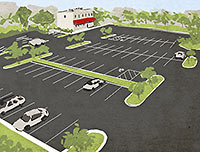 “It’s always frustrating when I hear Houston’s sprawl and prevalence of strip malls blamed on our lack of zoning. You can blame these on the setbacks and parking minimums that came along with Chapter 42, which made it illegal to build walkable neighborhoods.” [Angostura, commenting on Comment of the Day: The Kind of Zoning Houston Does Have] Illustration: Lulu
“It’s always frustrating when I hear Houston’s sprawl and prevalence of strip malls blamed on our lack of zoning. You can blame these on the setbacks and parking minimums that came along with Chapter 42, which made it illegal to build walkable neighborhoods.” [Angostura, commenting on Comment of the Day: The Kind of Zoning Houston Does Have] Illustration: Lulu
COMMENT OF THE DAY: HOW IT WORKS IN HOUSTON, THE FREE ENTERPRISE CITY  “. . . That is, and always has been, Houston. That unruly sprawl, those cookie-cutter suburbs, generic strip malls, traffic congestion, that all existed long before the Beltway was built. I grew up here, in a cookie-cutter suburb called ‘Sagemont’ located next to a 2 lane stretch of blacktop named ‘South Belt.’ My dad grew up in a cookie-cutter suburb 10 miles closer in, filled with generic strip malls, just outside what would become the 610 Loop. Today I live in another cookie-cutter suburb farther west, about half way between 610 and the Beltway. Still lots of congestion, sprawl, strip centers, etc. This is Houston, baby.
And just about everything in Houston exists because some powerful person (not necessarily a politician) owned tracts of land. All of those hip dense neighborhoods? They were empty fields that some speculator bought for next to nothing, then bribed . . . er, influenced someone in government to build something, often with tax dollars. That’s how things get done.” [Memebag, commenting on Driving Beltway 8, in Order To Read Houston in the Original] Illustration: Lulu
“. . . That is, and always has been, Houston. That unruly sprawl, those cookie-cutter suburbs, generic strip malls, traffic congestion, that all existed long before the Beltway was built. I grew up here, in a cookie-cutter suburb called ‘Sagemont’ located next to a 2 lane stretch of blacktop named ‘South Belt.’ My dad grew up in a cookie-cutter suburb 10 miles closer in, filled with generic strip malls, just outside what would become the 610 Loop. Today I live in another cookie-cutter suburb farther west, about half way between 610 and the Beltway. Still lots of congestion, sprawl, strip centers, etc. This is Houston, baby.
And just about everything in Houston exists because some powerful person (not necessarily a politician) owned tracts of land. All of those hip dense neighborhoods? They were empty fields that some speculator bought for next to nothing, then bribed . . . er, influenced someone in government to build something, often with tax dollars. That’s how things get done.” [Memebag, commenting on Driving Beltway 8, in Order To Read Houston in the Original] Illustration: Lulu
DRIVING BELTWAY 8, IN ORDER TO READ HOUSTON IN THE ORIGINAL 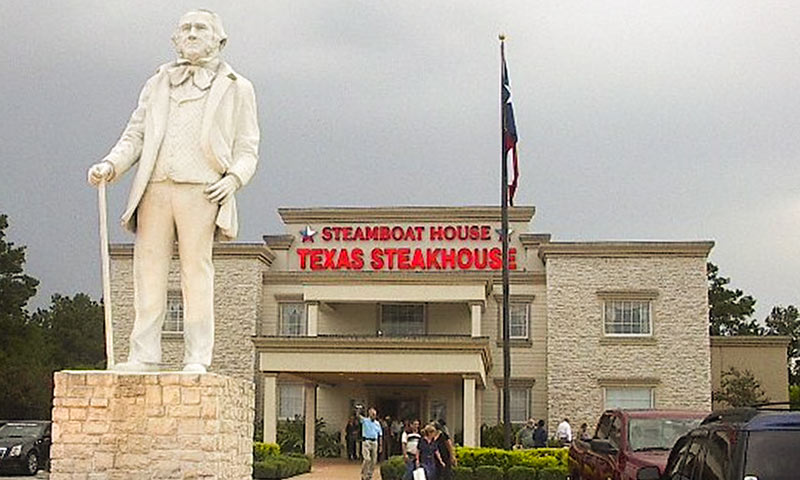 “To get a full sense of the place,” writes Cort McMurray, every Houstonian should travel Beltway 8’s full 83-mile circuit. Until you can find the time, though, his tour narrative may have to suffice: “Keep going. You’re not even halfway around. There are more factories, and more office buildings, more new construction, more traffic. There’s a steak house, built to look like Sam Houston’s Huntsville home, evidence that if you give a Houstonian a little time and a little encouragement and the right financing, a Houstonian will create something ridiculous, and the horse track, where nothing ever appears to be happening. Near Bush Intercontinental, you’ll endure Roadwork Purgatory: orange cones and narrowed lanes and blinking signs, and no evidence of any work being done. It’s been that way for 19 years.
East of the airport, the Beltway crosses vast swaths of tract homes and the strip centers and megachurches that inevitably follow them, funneling you toward the Jesse Jones Bridge, standing like the skeleton of some humongous sauropod, head forever bent to the Ship Channel, nosing about for some seaweed.” [OffCite] Photo of Steamboat House Steakhouse: Tomball Sesquicentennial Promenaders
“To get a full sense of the place,” writes Cort McMurray, every Houstonian should travel Beltway 8’s full 83-mile circuit. Until you can find the time, though, his tour narrative may have to suffice: “Keep going. You’re not even halfway around. There are more factories, and more office buildings, more new construction, more traffic. There’s a steak house, built to look like Sam Houston’s Huntsville home, evidence that if you give a Houstonian a little time and a little encouragement and the right financing, a Houstonian will create something ridiculous, and the horse track, where nothing ever appears to be happening. Near Bush Intercontinental, you’ll endure Roadwork Purgatory: orange cones and narrowed lanes and blinking signs, and no evidence of any work being done. It’s been that way for 19 years.
East of the airport, the Beltway crosses vast swaths of tract homes and the strip centers and megachurches that inevitably follow them, funneling you toward the Jesse Jones Bridge, standing like the skeleton of some humongous sauropod, head forever bent to the Ship Channel, nosing about for some seaweed.” [OffCite] Photo of Steamboat House Steakhouse: Tomball Sesquicentennial Promenaders
COMMENT OF THE DAY: THE SIGHTS ON AND OFF THE MEMORIAL DR. STRIP 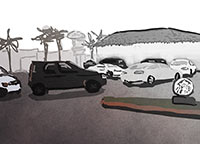 “. . . The whole thing of having this parkside expressway that drops to 35 and morphs into a suburban strip for all of 1/4 mile before resuming high-aesthetics high-speed is wonderfully convenient. Your last chance gas, your breakfast tacos and kolaches, your late-night eats . . . it’s all right there, no mucking about with U-turns or feeder roads required.
And no, this stripmall won’t be a huge visual contribution . . . but who cares? The views just 100 yards to the south are about as aesthetically pleasing as one can find in our fair city, and after all, isn’t that what matters? So much discussion of the urban form boils down to complaining about what we see from our car windows. But if the view from home and office is nice, isn’t that really what matters?” [Purple City, commenting on How a Stretch of the Memorial Dr. Strip Earned Its Newest Strip Center] Illustration: Lulu
“. . . The whole thing of having this parkside expressway that drops to 35 and morphs into a suburban strip for all of 1/4 mile before resuming high-aesthetics high-speed is wonderfully convenient. Your last chance gas, your breakfast tacos and kolaches, your late-night eats . . . it’s all right there, no mucking about with U-turns or feeder roads required.
And no, this stripmall won’t be a huge visual contribution . . . but who cares? The views just 100 yards to the south are about as aesthetically pleasing as one can find in our fair city, and after all, isn’t that what matters? So much discussion of the urban form boils down to complaining about what we see from our car windows. But if the view from home and office is nice, isn’t that really what matters?” [Purple City, commenting on How a Stretch of the Memorial Dr. Strip Earned Its Newest Strip Center] Illustration: Lulu
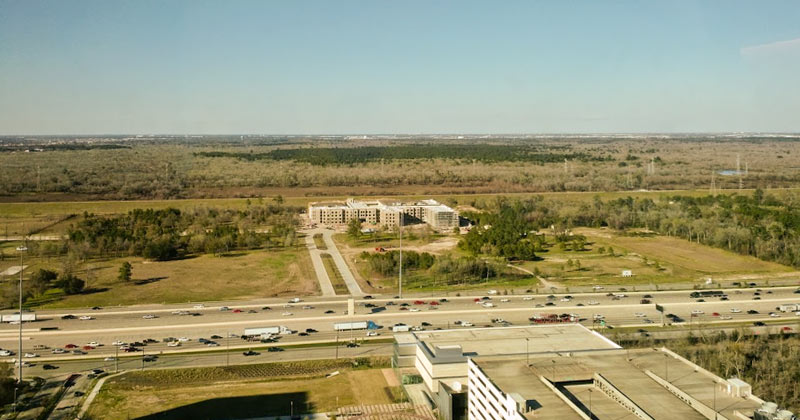
And now, a new 5-story apartment complex that’s outstanding in its field. Which is directly across I-10 from BP headquarters, and just south of the Addicks Reservoir. The reader who sent in this photo (showing the building at 13710 Park Row Dr. right in the center of the image) dubs it “Houston’s loneliest apartment complex.” But not for long — right?
COMMENT OF THE DAY: THE PROBLEMS SPRAWL SOLVES 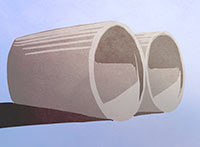 “. . . the concern about cities expanding out into the suburbs is about worker mobility and our ability to fund adequate infrastructure. That’s great if the woodlands, katy, and sugarland could become real functioning cities comparable to that of Houston. However, it’s unsustainable if you have poor transportation options affecting the supply of qualified labor and an undiversified industry base that leads to boom and bust cycles. We can barely afford Metro’s reach in central Houston and with more low-income workers being pushed further from the city’s core we will continue to lose workers from our supply of labor.
I love Houston the way it’s always been though. having multiple office centers spread across town helps keep housing demand distributed across a wider area rather than turning the central part of town into an enclave for well paid dual income families only. Allowing land to continue being gobbled up further and further out allows for affordable housing for new residents increasing our supply of labor. Anything that helps cities expand, even if endless suburban sprawl, and make better use of their existing resources and infrastructure is a positive to me.” [joel, commenting on Comment of the Day: West Houston’s Plan for Suburban Domination] Illustration: Lulu
“. . . the concern about cities expanding out into the suburbs is about worker mobility and our ability to fund adequate infrastructure. That’s great if the woodlands, katy, and sugarland could become real functioning cities comparable to that of Houston. However, it’s unsustainable if you have poor transportation options affecting the supply of qualified labor and an undiversified industry base that leads to boom and bust cycles. We can barely afford Metro’s reach in central Houston and with more low-income workers being pushed further from the city’s core we will continue to lose workers from our supply of labor.
I love Houston the way it’s always been though. having multiple office centers spread across town helps keep housing demand distributed across a wider area rather than turning the central part of town into an enclave for well paid dual income families only. Allowing land to continue being gobbled up further and further out allows for affordable housing for new residents increasing our supply of labor. Anything that helps cities expand, even if endless suburban sprawl, and make better use of their existing resources and infrastructure is a positive to me.” [joel, commenting on Comment of the Day: West Houston’s Plan for Suburban Domination] Illustration: Lulu
WORLD’S LARGEST AIR CONDITIONING MANUFACTURER TO BUILD GIANT COMFORTPLEX AT NORTHERN REACHES OF KATY PRAIRIE 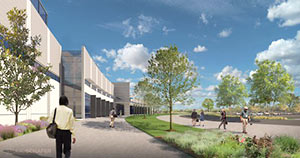 Ah, Houston industry! Oil may be down, but air conditioning is booming — and ready to do its part to further our fine city’s sprawl-ward spread. Ralph Bivins reports this morning that Japanese HVAC giant Daikin Industries, which paid $3.7 billion back in 2012 to buy Houston’s Goodman Global, will build a $417 million, 4,000,000-sq.-ft. manufacturing and logistics campus on virgin prairie southeast of Hockley, off U.S. 290 a good 3 miles west of the Grand Parkway. Dubbed the “Comfortplex,” the facility (portrayed in the rendering above) will consolidate current company operations in both Tennessee and Texas, and increase the company’s Houston-area workforce to approximately 4,000 employees. The Comfortplex will replace an existing 525,000-sq.-ft. Goodman air-conditioner factory near Loop 610 and 290 when it opens in 2016, Bivins notes. The company produces ducted and ductless AC systems under the Daikin, Goodman, and Amana brand names. [Realty News Report] Rendering: Daikin Industries
Ah, Houston industry! Oil may be down, but air conditioning is booming — and ready to do its part to further our fine city’s sprawl-ward spread. Ralph Bivins reports this morning that Japanese HVAC giant Daikin Industries, which paid $3.7 billion back in 2012 to buy Houston’s Goodman Global, will build a $417 million, 4,000,000-sq.-ft. manufacturing and logistics campus on virgin prairie southeast of Hockley, off U.S. 290 a good 3 miles west of the Grand Parkway. Dubbed the “Comfortplex,” the facility (portrayed in the rendering above) will consolidate current company operations in both Tennessee and Texas, and increase the company’s Houston-area workforce to approximately 4,000 employees. The Comfortplex will replace an existing 525,000-sq.-ft. Goodman air-conditioner factory near Loop 610 and 290 when it opens in 2016, Bivins notes. The company produces ducted and ductless AC systems under the Daikin, Goodman, and Amana brand names. [Realty News Report] Rendering: Daikin Industries

